
When I was a little kid growing up on the coast of Maine, I distinctly remember having a t-shirt for the “Seattle Rain Festival, January 1st – December 31st.” It was yellow. I have no idea where the shirt came from. I have no relatives in Seattle and no one in my family has ever, to my knowledge, ever even been to Seattle. But someone explained to me that the shirt was joke. It might be the first joke I remember. And, hey, I still know it.
I mention it now because I’m in Seattle and, naturally, it’s raining off and on. Thing is, we need it to stop. Actually, we don’t even need it to stop. We need it to slow down by the time it gets dark so we can safely shoot a night exterior.
In the meantime, we’re shooting inside. We’re using duvetyne to black out the windows in the bedroom and bathroom to get a night scene. The bedroom windows aren’t in the shot, but the small bathroom one is and DP Ty Migota wants to try and keep the tree outside in the shot, so he sends Nick out to wrap the duvetyne around the tree. Sure there’s better ways to do that, but we don’t have access to those better ways.
Later, under easier circumstances, we construct a tent of duvetyne using c-stands and clamps on a porch outside a window. We’re able to put a small light inside the tent. It’s not so high off the ground, so it works. Until the rain picks up, of course.
Part of the challenge inherent in THE SUMMER HOME stems from that lack of knowledge about the location. We have gear we don’t need and need gear we don’t have. It’s not as simple as just going to the store to get something–we’re on an island. The ferry only runs so often.
So I guess it’s not so surprising when Ty Migota holds a ND filter over the lens because there isn’t a matte box. But what is surprising is how a couple of hours later, when the lighting in the living room isn’t right, he holds that filter over part of the lens, fixing the exposure issue on the actor in the background.
It’s a perfect no-budget indie film moment–using the tools at hand to get it done, convention be damned. And you know what? It works. It isn’t something you’re going to write to the film school alumni association about, but it works.
And really that’s the spirit of the whole production. Just make it work.
So when the skies clear at the start of Magic Hour, we all run outside and improvise a scene with Wonder and Paul on the shore. Then, we set up for our night shooting, which involves a broken down car on the side of an actual road, with me around the corner to stop traffic (we have no permits) before the headlights get in the shot.
Next thing I know, I’m spinning a c-stand with a 650W on top, trying to simulate passing street lights. I can get 4 full rotations before the power cords get too tightly wrapped around the base, then it’s back to 1 and start over.
And then, just because no one has gotten hurt yet, we film a scene where Paul has to literally scale the side of the house. Everything is wet and slippery. From my vantage point on the balcony he’s attempting to reach, I see his hands grab the rail, then slip momentarily before re-gaining the hold. It’s something they’re going to have to replace the audio for because you can definitely hear a couple people gasping.
He doesn’t seem to mind, and if that isn’t the sign of a dedicated actor, then I don’t know what is.
Filmmaker Lucas McNelly is spending a year on the road, volunteering on indie film projects around the country, documenting the process and the exploring the idea of a mobile creative professional. You can see more from A Year Without Rent at the webpage. His feature-length debut is now available to rent on VOD. Follow him on Twitter: @lmcnelly.

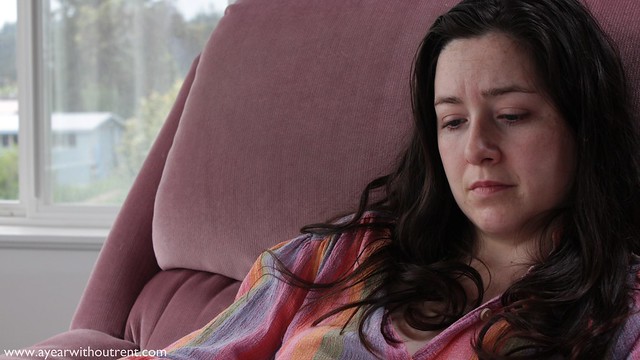

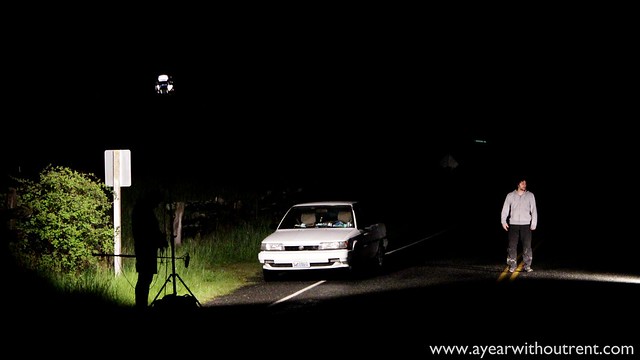
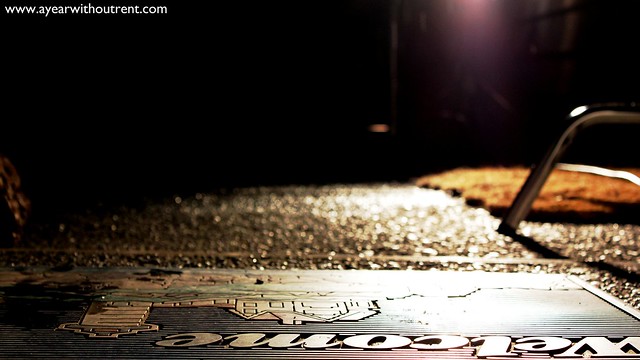
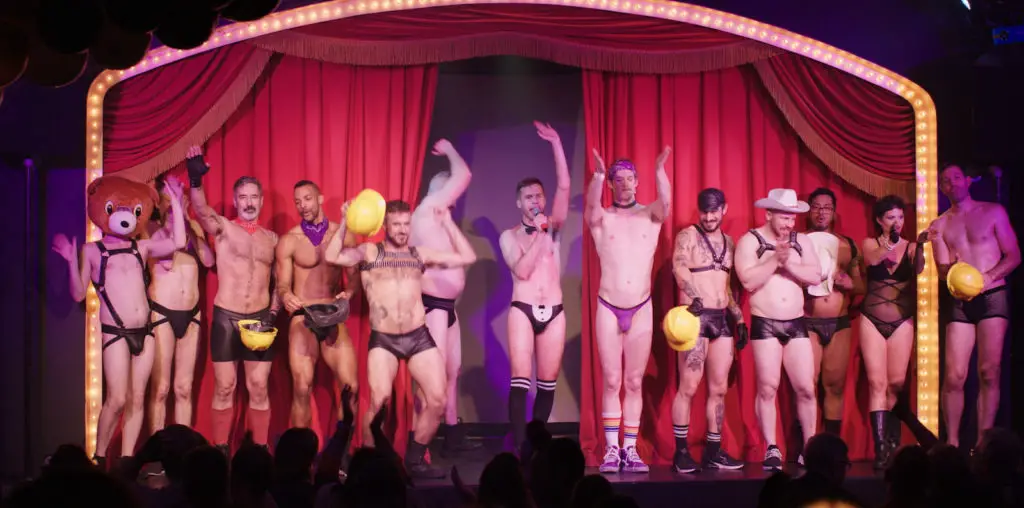
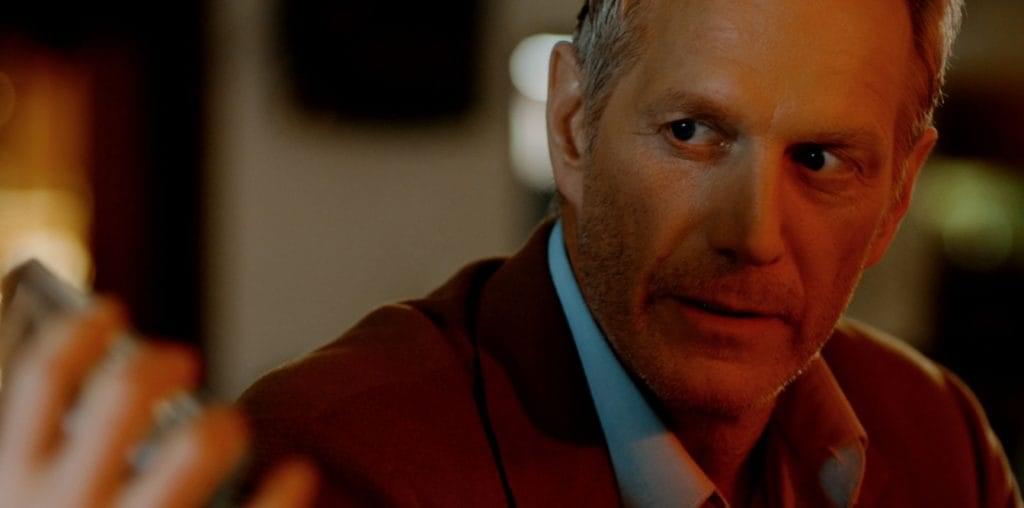
The t-shirt comes from Pike Place Market in Seattle. There’s a guy here who has been hand silkscreening them for years. You can still get one today.